Artist: Frank McKelvey Title: The Back of the House Signature: signed 'FRANK McKELVEY' lower right Medium: oil on canvas board Size: 35.60 x 45.80cm (14 x 18in) Framed Size: 56 x 66cm (22 x 26in) Provenance: William Rodman & Co, Belfast (label verso); Private Collection a#morebtn { color: #de1d01; } a#morebtn:hover { cursor: pointer;} On a sunlit driveway, flanked by leafy trees, a woman and child are feeding a flock of chickens. Leading to an old wrought-iron gate and farmhouse, the driveway is rutted with wheel tracks. Part of a longer building, the whitewashed farmhouse, its walls dappled with sunlight and shadow, provides a b... Read more Frank McKelvey Lot 71 - 'The Back of the House' Estimate: €12,000 - €16,000 On a sunlit driveway, flanked by leafy trees, a woman and child are feeding a flock of chickens. Leading to an old wrought-iron gate and farmhouse, the driveway is rutted with wheel tracks. Part of a longer building, the whitewashed farmhouse, its walls dappled with sunlight and shadow, provides a backdrop to this everyday farming scene. Above the thatched roof and squat chimney stack, the blue sky is highlighted with white clouds. McKelvey has captured a scene of springtime or early summer, with trees coming in to leaf. He uses alternating bands of light and shade to good effect, and his skilled handling of oil paint makes this Impressionist scene a quintessential image of farming life in Ireland in the mid-twentieth century. Although an idyllic scene, as in many of McKelvey's paintings there is a sense of the preciousness of human existence. Youth and age stand side by side, enjoying a peaceful moment in an all-too-fleeting lifetime. Born in Belfast in 1895, McKelvey attended evening classes at the Belfast College of Art, while training as a poster designer for David Allen and Sons. In 1911 he became a full-time student at the College, winning many prizes, and seven years later won the Taylor art competition with his painting The Grandmother. Over the following years he painted views of farm workers near Bessborough, Co. Armagh, where his in-laws had a farm. While the Realism of his early work gradually gave way to a more Impressionist palette and approach, McKelvey never swayed from providing an authentic, if idealised, depiction of life of the Irish countryside and coastline. In addition to the rural areas around Belfast Lough and the Lagan river, he depicted coastal scenery in counties Donegal and Mayo. A conservative and accomplished painter, his work evokes cloud-filled skies, silver light reflected on water and people getting on with their everyday lives. Early in his career, he was commissioned by Thomas McGowan to paint a series of views depicting the older parts of Belfast city. These are now in the collection of the Ulster Museum. In 1920 he established a studio in Royal Avenue and over the following years became a member of the Belfast Art Society, the Ulster Society of Painters and, in 1930, the Royal Hibernian Academy. In 1924, he married and settled in Co. Down, but two years later moved back to Belfast. Although he was a leading member of the Northern landscape painters, there are ten portraits by him in Queen's University, and thirteen portraits of US presidents of Ulster extraction, in the Ulster Museum. In New York McKelvey was one of a number of Irish artists shown at the Hackett Gallery, while in Dublin, in 1937, he had his first exhibition at the Victor Waddington Gallery. A founder member of the Royal Ulster Academy in 1930, he last exhibited with the RUA in 1969. His favourite locations for painting landscape were Co. Armagh, the Antrim Coast and, in later years, Co. Donegal. Together with James Humbert Craig Paul Henry and Charles Lamb, McKelvey is credited with creating a 'national' school of Irish landscape painting in the twentieth century. Peter Murray, March 2023
Artist: Frank McKelvey Title: The Back of the House Signature: signed 'FRANK McKELVEY' lower right Medium: oil on canvas board Size: 35.60 x 45.80cm (14 x 18in) Framed Size: 56 x 66cm (22 x 26in) Provenance: William Rodman & Co, Belfast (label verso); Private Collection a#morebtn { color: #de1d01; } a#morebtn:hover { cursor: pointer;} On a sunlit driveway, flanked by leafy trees, a woman and child are feeding a flock of chickens. Leading to an old wrought-iron gate and farmhouse, the driveway is rutted with wheel tracks. Part of a longer building, the whitewashed farmhouse, its walls dappled with sunlight and shadow, provides a b... Read more Frank McKelvey Lot 71 - 'The Back of the House' Estimate: €12,000 - €16,000 On a sunlit driveway, flanked by leafy trees, a woman and child are feeding a flock of chickens. Leading to an old wrought-iron gate and farmhouse, the driveway is rutted with wheel tracks. Part of a longer building, the whitewashed farmhouse, its walls dappled with sunlight and shadow, provides a backdrop to this everyday farming scene. Above the thatched roof and squat chimney stack, the blue sky is highlighted with white clouds. McKelvey has captured a scene of springtime or early summer, with trees coming in to leaf. He uses alternating bands of light and shade to good effect, and his skilled handling of oil paint makes this Impressionist scene a quintessential image of farming life in Ireland in the mid-twentieth century. Although an idyllic scene, as in many of McKelvey's paintings there is a sense of the preciousness of human existence. Youth and age stand side by side, enjoying a peaceful moment in an all-too-fleeting lifetime. Born in Belfast in 1895, McKelvey attended evening classes at the Belfast College of Art, while training as a poster designer for David Allen and Sons. In 1911 he became a full-time student at the College, winning many prizes, and seven years later won the Taylor art competition with his painting The Grandmother. Over the following years he painted views of farm workers near Bessborough, Co. Armagh, where his in-laws had a farm. While the Realism of his early work gradually gave way to a more Impressionist palette and approach, McKelvey never swayed from providing an authentic, if idealised, depiction of life of the Irish countryside and coastline. In addition to the rural areas around Belfast Lough and the Lagan river, he depicted coastal scenery in counties Donegal and Mayo. A conservative and accomplished painter, his work evokes cloud-filled skies, silver light reflected on water and people getting on with their everyday lives. Early in his career, he was commissioned by Thomas McGowan to paint a series of views depicting the older parts of Belfast city. These are now in the collection of the Ulster Museum. In 1920 he established a studio in Royal Avenue and over the following years became a member of the Belfast Art Society, the Ulster Society of Painters and, in 1930, the Royal Hibernian Academy. In 1924, he married and settled in Co. Down, but two years later moved back to Belfast. Although he was a leading member of the Northern landscape painters, there are ten portraits by him in Queen's University, and thirteen portraits of US presidents of Ulster extraction, in the Ulster Museum. In New York McKelvey was one of a number of Irish artists shown at the Hackett Gallery, while in Dublin, in 1937, he had his first exhibition at the Victor Waddington Gallery. A founder member of the Royal Ulster Academy in 1930, he last exhibited with the RUA in 1969. His favourite locations for painting landscape were Co. Armagh, the Antrim Coast and, in later years, Co. Donegal. Together with James Humbert Craig Paul Henry and Charles Lamb, McKelvey is credited with creating a 'national' school of Irish landscape painting in the twentieth century. Peter Murray, March 2023

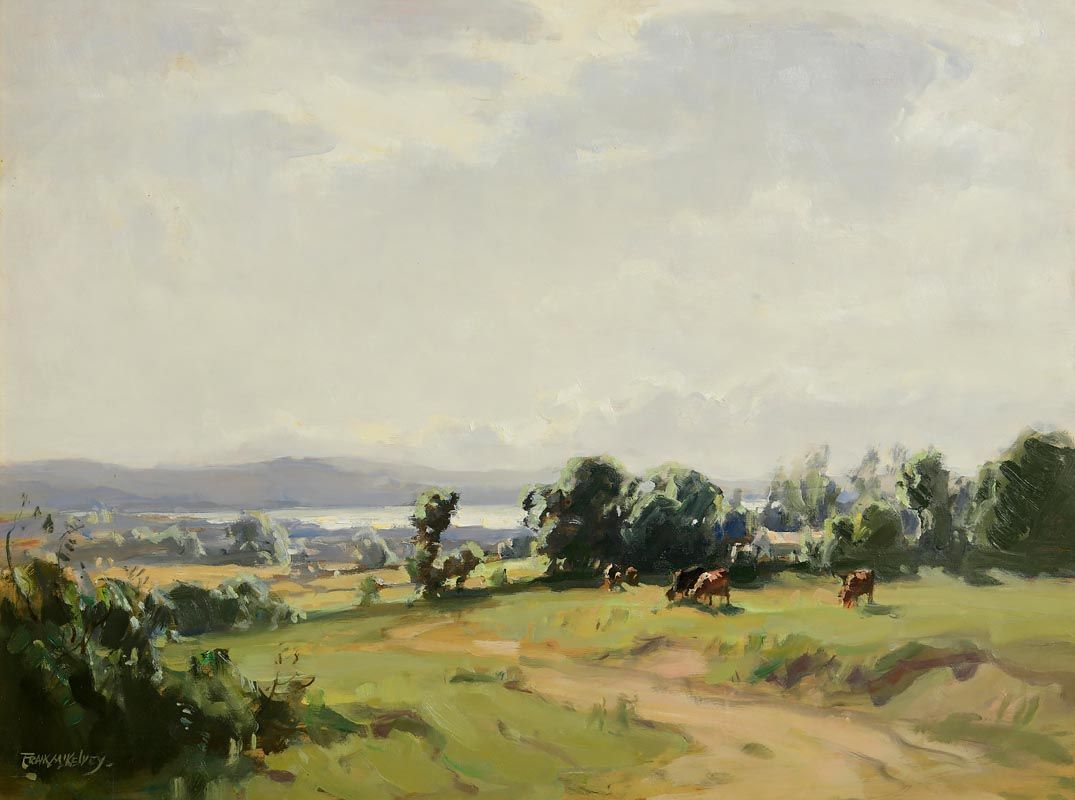

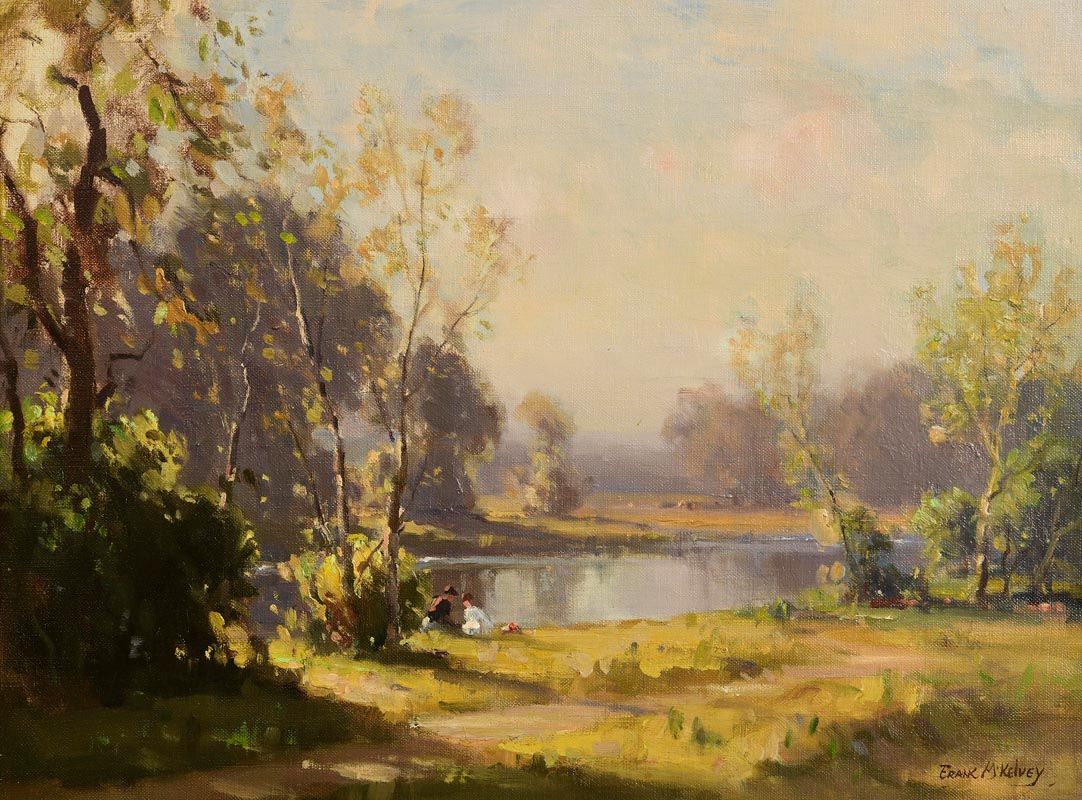

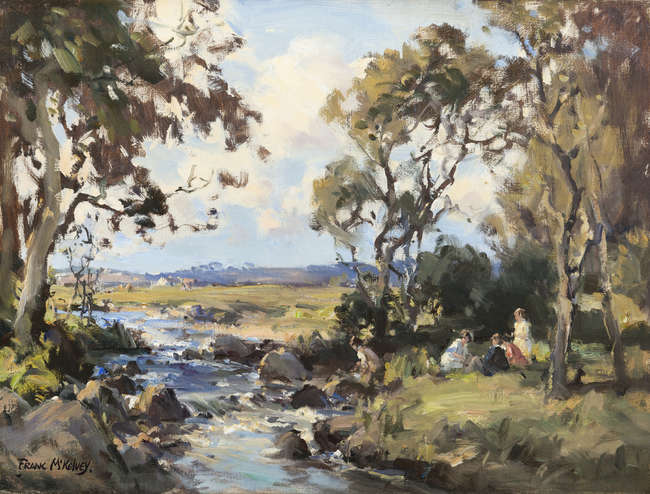
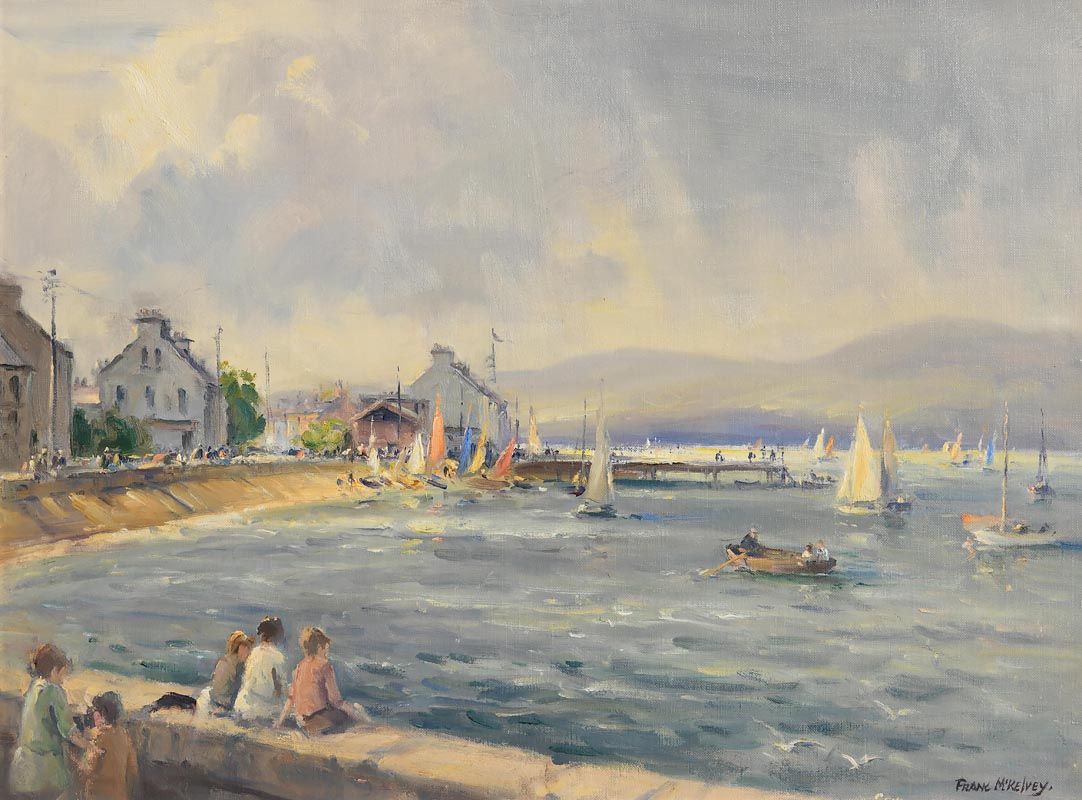

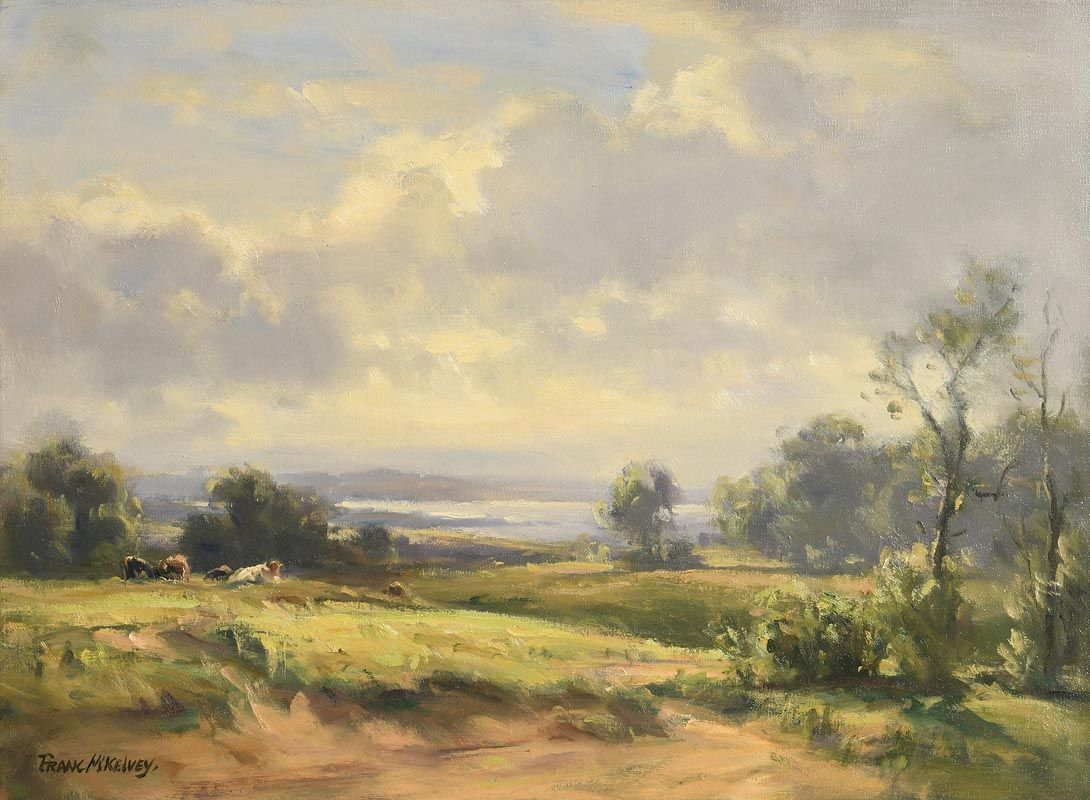
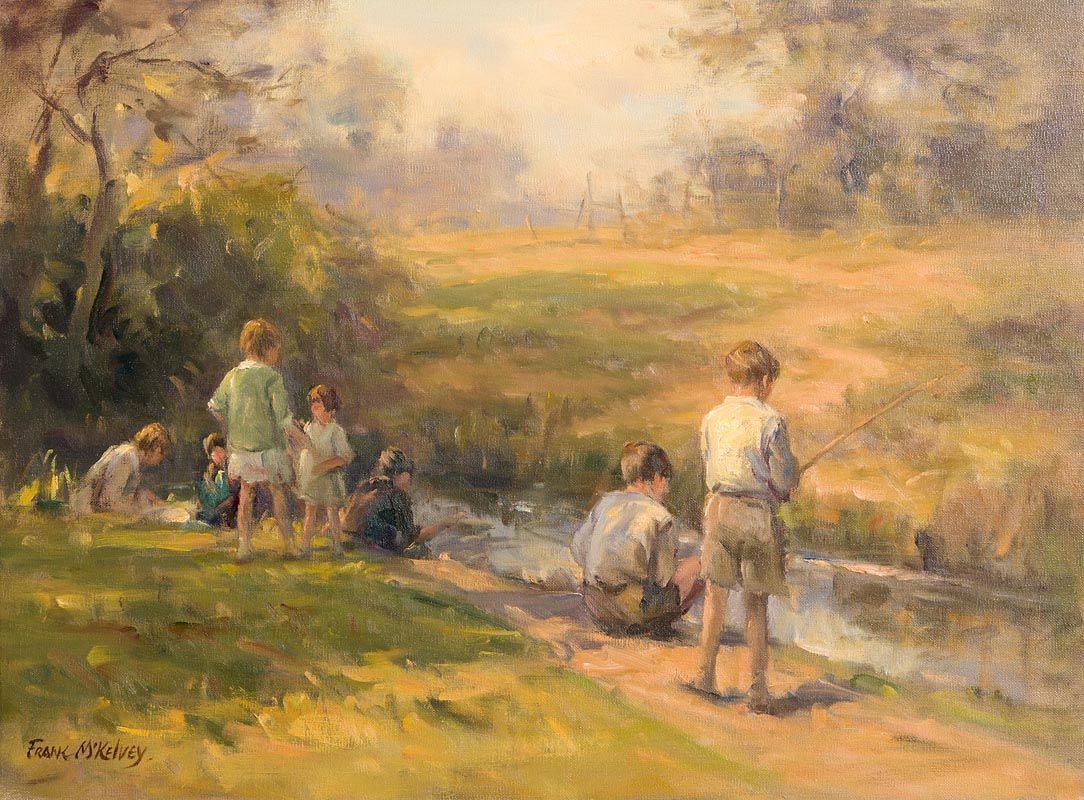
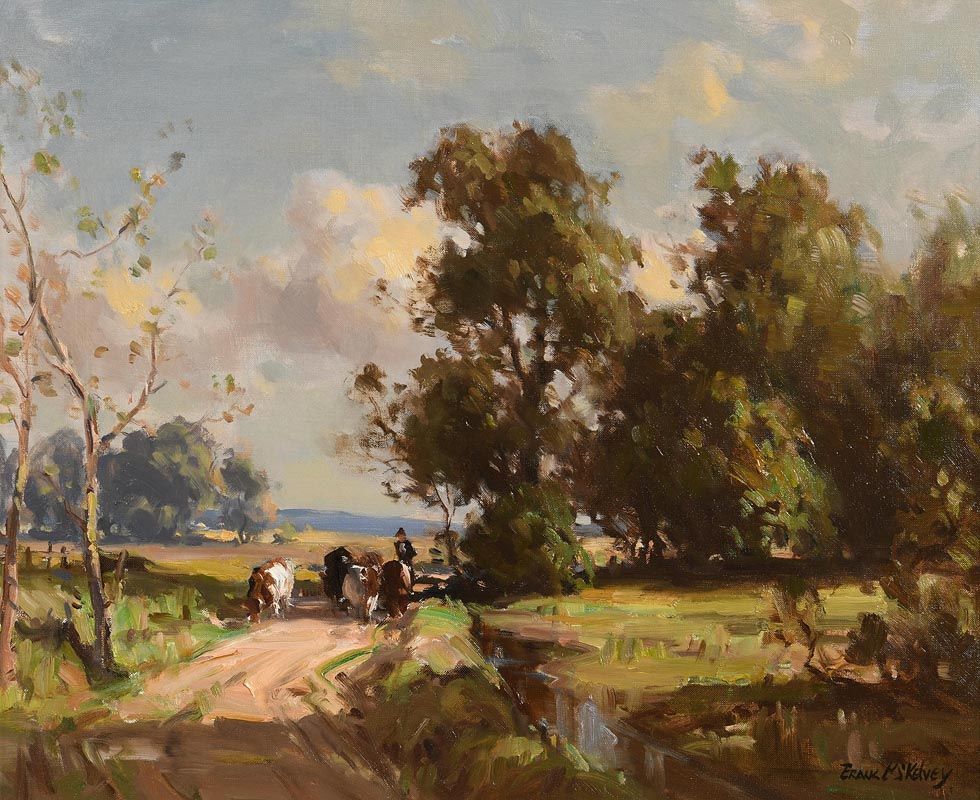

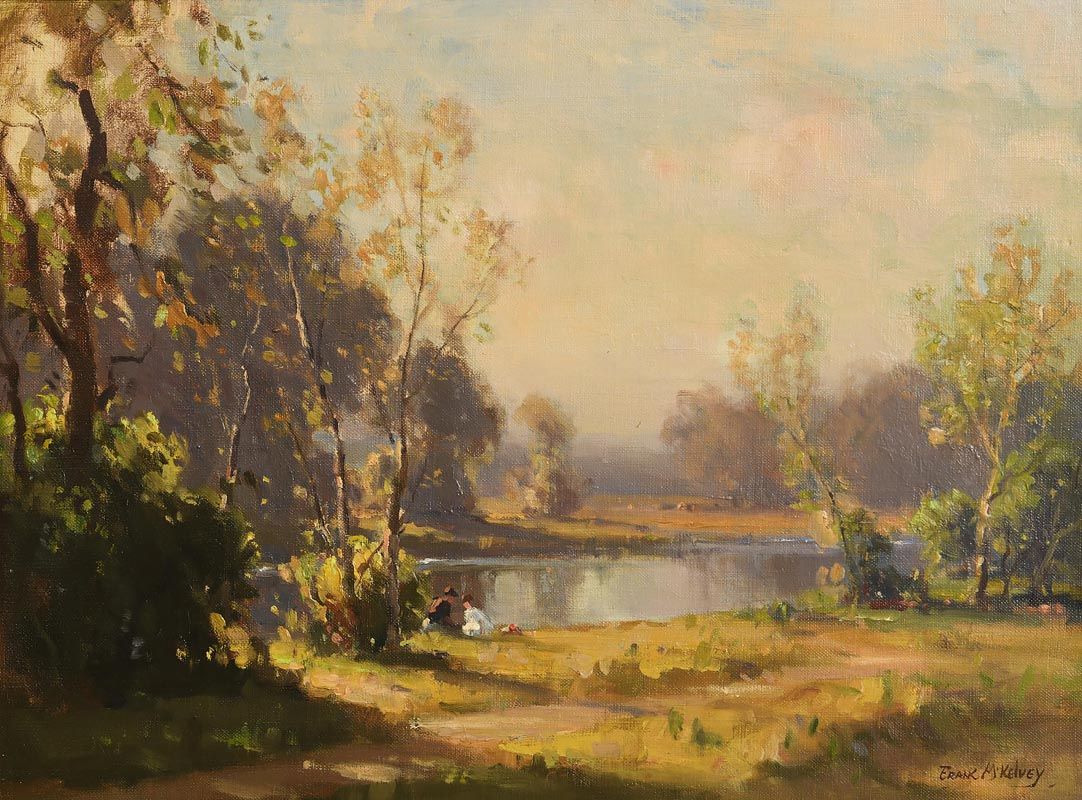
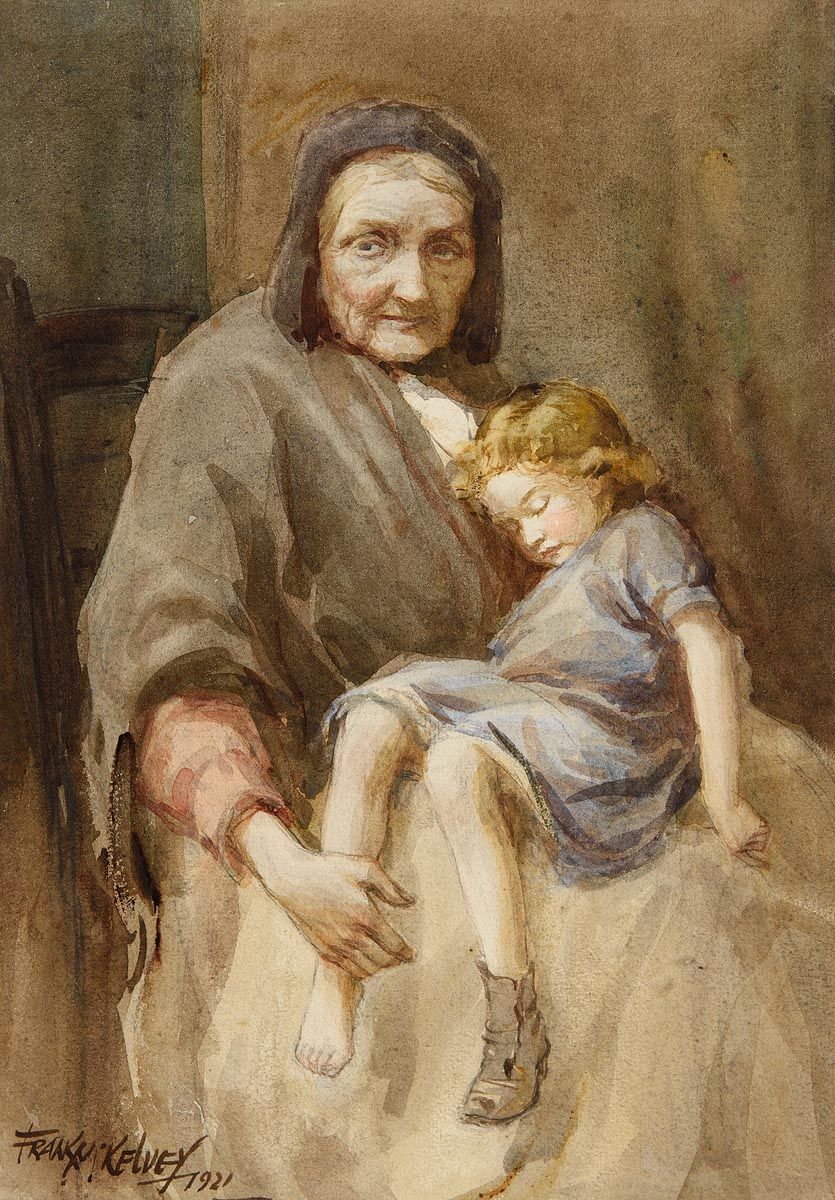
Testen Sie LotSearch und seine Premium-Features 7 Tage - ohne Kosten!
Lassen Sie sich automatisch über neue Objekte in kommenden Auktionen benachrichtigen.
Suchauftrag anlegen